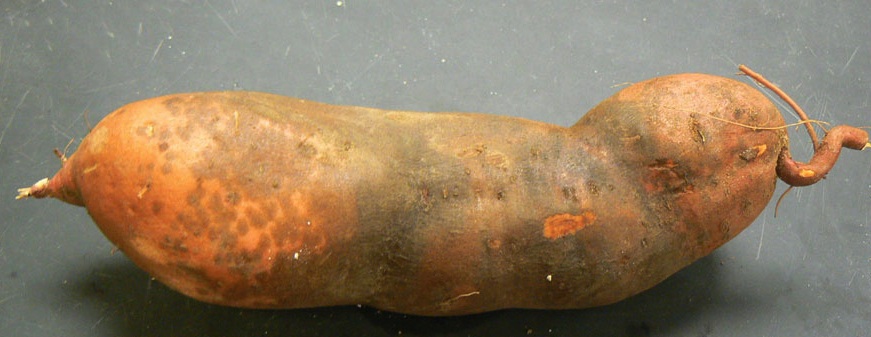-
Symptoms of scurf begin during the growing season as small, dark brown to black spots that develop on roots and later merge to form irregular lesions.
-
Lesions enlarge until the entire surface of the root is discolored.
-
Copper-skinned sweet potatoes usually have brown lesions, and red-skinned sweet potatoes have black lesions.
-
Symptoms are restricted to the skin of storage roots and do not directly affect the underlying tissue. Affected tissue can be easily scraped off.
-
Cracks may develop on severely affected sweet potatoes and result in shrinkage because of water loss. Scurf-infected sweet potatoes are more susceptible to invasion by other fungi.
-
Scurf lesions continue to enlarge when sweet potatoes are put into storage, and new lesions appear if high relative humidity is maintained. The optimum temperature for disease development is 75 degrees F, but scurf can develop to a lesser extent over a wide range of temperatures. Disease development is greatest when soil moisture is optimal for plant growth.
-
Most scurf infections result from the use of infected propagating material. The fungus can also survive in crop debris in the soil for 1 to 2 years.
-
Disease severity is greater and persistence of the pathogen longer in fine-textured, highly organic soils. The disease has a narrow host range that consists only of species in the genus Ipomoea.

